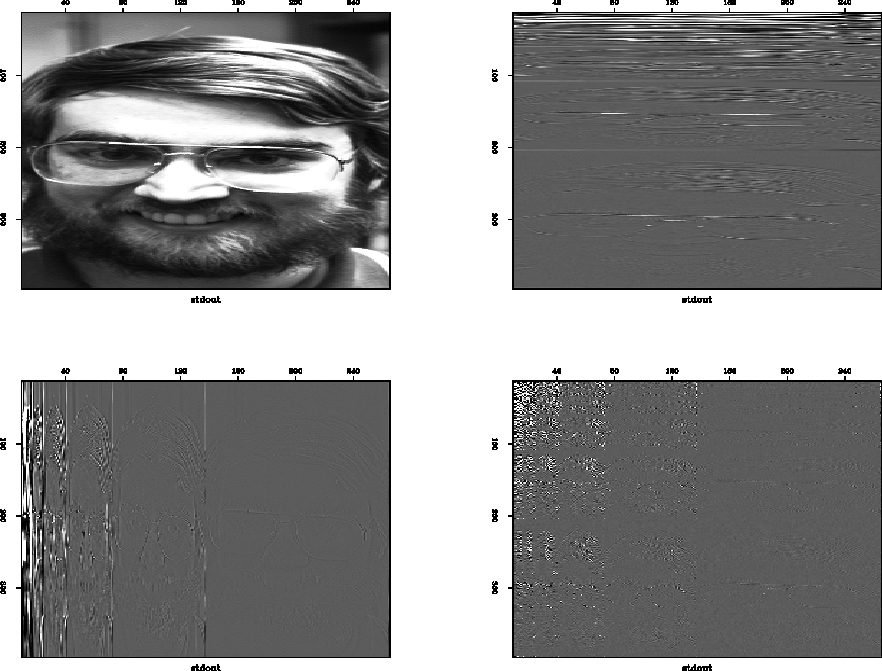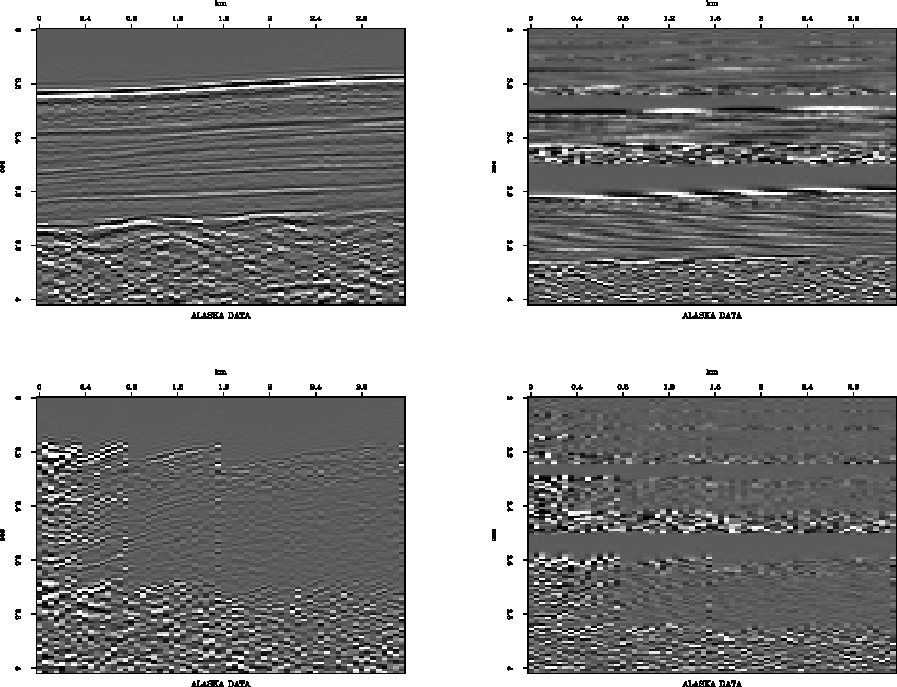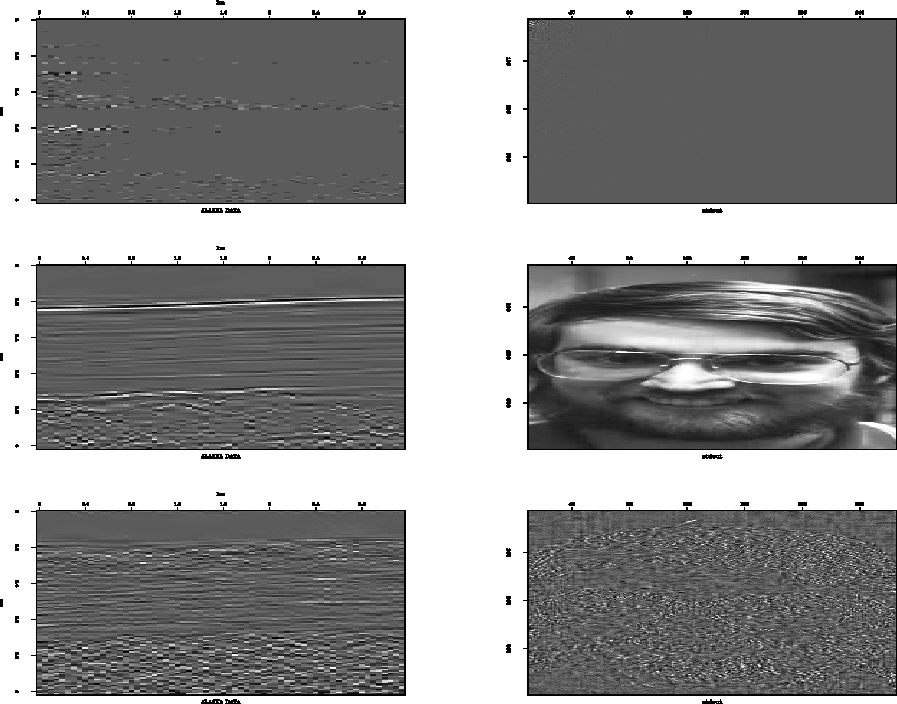




Next: CONCLUSIONS
Up: APPLICATIONS
Previous: Interpolation by wavelets
The objective of data compression is to store information efficiently.
Some conservative data compression schemes achieve this compression
without changing
the input data. Other approaches reduce the data down to their
essential features and store only those features.
Obviously, for such a compression
to be successful, the correct reduction or filter step must be
used. The correct filter preserves the data features which we
consider essential.
Data compression by wavelet transformation is accomplished by storing the
location of the significant samples and omitting the insignificant
values. In practice a hybrid method is often used. The values and location
of the maximum samples are stored. Intermediate sized sample values are
stored by one- or two-bit representation of their value. Sample values
below a certain threshold are neglected. In this project I did not
store the actual sample values, because I was primarily interested in
the effects of filtering in the wavelet domain.
In wavelet compression the input data are transformed and small sample
values are neglected. In Figures 7 and 8,
I have erased all samples smaller than
10 % of the maximum value. This leaves only about 8 % of the samples
as nonzero.
The purpose of a video telephone picture of a person is to be recognizable.
Little details
are often negligible. The reduction step can be tested by interviewing
users about their satisfaction. However, for seismic data it is
hard to decide
which details might be of importance in latter interpretation.
Without a clear definition of what we want to preserve, a data compression
by reduction cannot finally be evaluated.
Data which depict a sparse wavelet transform are suited for compression
by DWT.
In Figure 7 the photograph's wide, smooth areas like the forehead
and the cheeks
are bounded by edges such as the hair line or the facial oval. The
data yield a fairly sparse wavelet transform. Only few detail
coefficients corresponding to the edges are of substantial size.
Unfortunately, seismic data do not yield such a sparse matrix.
Zeroing values below the 10 % threshold leaves the data severely
distorted as seen in Figure 8. Seismic velocity spectra
or well logs might be
more suitable for compression by wavelet transformation.
plane2
Figure 7
Two-dimensional wavelet transform of a picture.
The input picture (top left) is transformed in the vertical
(top right) and horizontal (bottom left) directions.
Note that the face is repeated in the different octave
subspaces of all transformed matrices. The lower right
quarter of the matrix shows the edge details of the face.
The glasses are depicted differently in each of the
outer quarters of the matrix. These quarters, as well as
the horizontally and vertically transformed matrix, are biased
toward the horizontal and vertical edges, respectively.
Unfortunately, these details are hardly visible in the paper
document.





plane1
Figure 8
Two-dimensional wavelet transform of a seismic section.
The same sequence of wavelet transformation as Figure 7,
except that the data object is a
seismic section.





comp
Figure 9
Data compression by wavelet transform. The 2-D
transformation of the previous examples of Figure 7 and
8 is used for data reduction. In the wavelet domain every
sample value smaller than a certain threshold (10 % maximum value)
is erased. The top panels depict the reduced wavelet coefficient
matrices. The middle panels show the reconstructed picture.
The bottom row shows the difference between the inverted sections
and the original data. In the electronic version of this book
pushing the button let you explore data compression by
wavelet transformation interactively.










Next: CONCLUSIONS
Up: APPLICATIONS
Previous: Interpolation by wavelets
Stanford Exploration Project
11/18/1997


